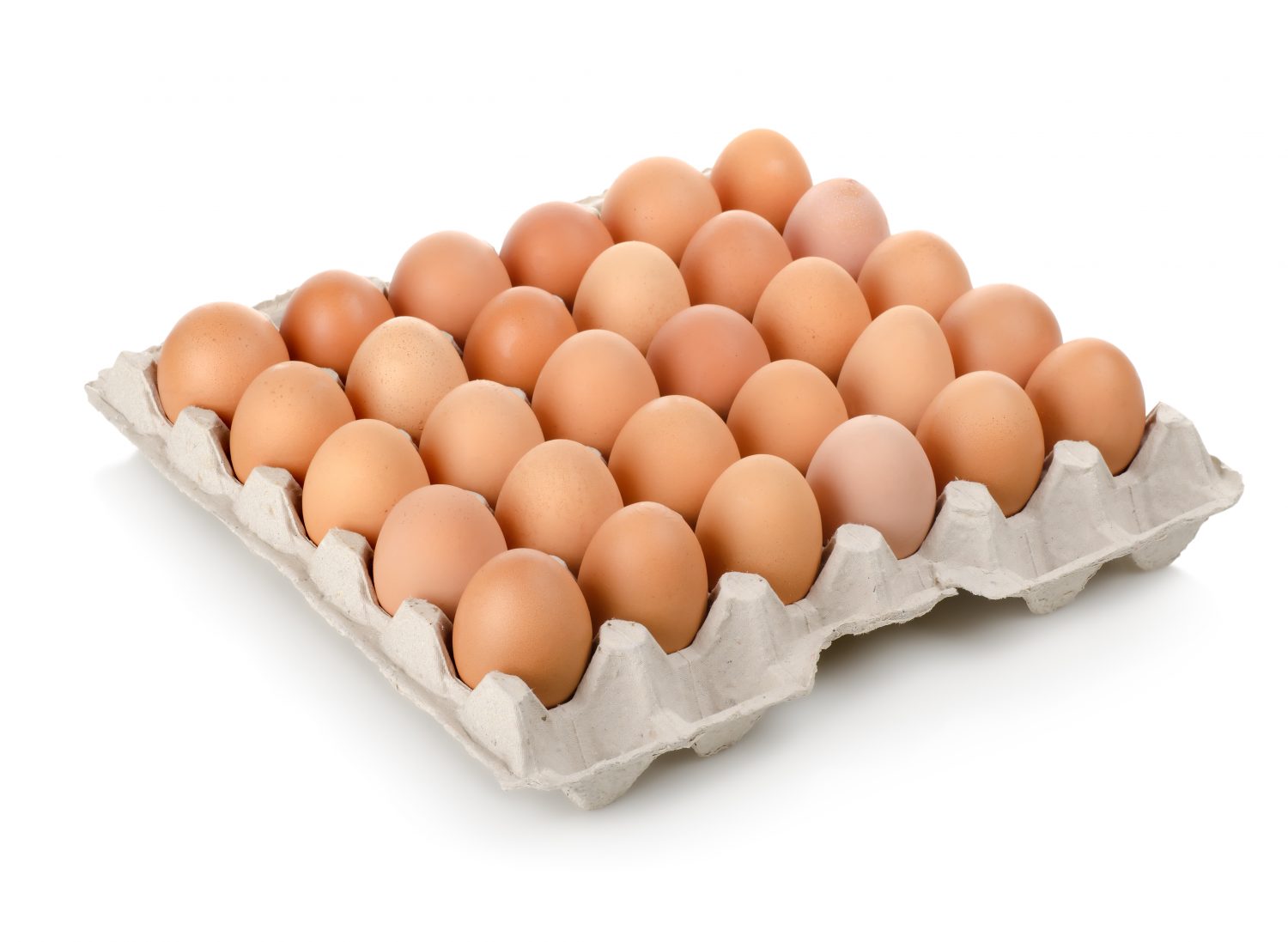
WASDE: Production, Ending Stocks on the Rise
WHEAT
The U.S. 2018/19 wheat supply and demand estimates are unchanged from last month. There are offsetting by-class changes for both exports and imports. The season-average farm price range is unchanged at the midpoint of $5.10 per bushel and the range is narrowed $0.20 per bushel to $4.70 to $5.50.
Global wheat supplies for 2018/19 are raised 4.7 million tons on a 3.4-million-ton production increase and higher beginning stocks. The Russian crop is raised 3.0 million tons on harvest results to date in the winter wheat region and continued excellent weather in the spring wheat belt. Kazakhstan is raised 0.5 million tons also on excellent spring wheat conditions. Production is increased 2.7 million tons in India to a record 99.7 million on updated government data. These increases are partially offset by a 2.0-million-ton decrease in Australia and a 1.0-million-ton decrease in Canada, both reflecting continued dry conditions during the growing season. Global exports are lowered 2.5 million tons with a 2.0-million-ton reduction for Australia and a 0.5-million-ton reduction for Canada, both on smaller crops. Indonesia and Iran imports are down 1.0 million tons and 0.5 million tons, respectively. Global use is raised 2.3 million tons primarily on a 2.0-million-ton increase for Russia feed and residual use and a 1.0-million-ton increase for EU feed and residual use. With total supplies rising faster than use, global ending stocks are raised 2.3 million tons to 261.3 million but are 5 percent below last year’s record.
COARSE GRAINS
This month’s 2018/19 U.S. corn outlook is for larger production, increased domestic use, greater exports, and higher ending stocks. Corn production is forecast at 14.827 billion bushels, up 241 million from last month on an increased yield forecast. If realized, the crop would be the second highest on record. Among the major producing states, yields are forecast to be record high in Illinois, Iowa, Nebraska, Indiana, Ohio, and South Dakota. Corn supplies are higher from last month, as a larger crop more than offsets a small decline in beginning stocks due to higher estimated exports for 2017/18. Feed and residual use for 2018/19 is raised 50 million bushels with a larger crop and lower expected prices. Corn used for ethanol is raised 25 million bushels. With supply rising more than use, corn ending stocks are up 90 million bushels from last month. The season-average corn price received by producers is projected 10 cents lower with a midpoint of $3.50 per bushel.
Global coarse grain production for 2018/19 is forecast up 5.1 million tons to 1,347.2 million. The 2018/19 foreign coarse grain outlook is for lower production, greater consumption, increased trade, and reduced stocks relative to last month. Foreign corn production is forecast higher than last month with projected increases for the EU, Angola, Paraguay, Turkey, and Serbia more than offsetting declines for Canada, South Africa, and Guatemala. EU corn production is raised, mostly reflecting increases for Romania, Hungary, Bulgaria, and France. In both Bulgaria and Romania, yields are expected to be record high. World barley production is lowered, with reductions for the EU, Australia, and Ukraine more than offsetting increases for Kazakhstan and Russia.
Corn exports for 2018/19 are raised for Ukraine, Serbia, and Paraguay, but lowered for Canada and South Africa. Imports are raised for the EU, Japan, Brazil, and Guatemala, with partly offsetting declines for Algeria and Saudi Arabia. For 2017/18, exports are lowered for both Brazil and Argentina, reflecting slower-than-expected trade to date. Foreign corn ending stocks for 2018/19 are down from last month, with declines for Argentina, South Africa, Ukraine, Canada, and Serbia more than offsetting increases for Angola, Paraguay, the EU, Brazil, Turkey, and India. Global corn stocks, at 157.0 million tons, are up 1.5 million from last month.
RICE
U.S. 2018/19 all rice supplies are raised 3.3 million cwt this month to 275.9 million as higher production more than offsets lower beginning stocks. The August 24 NASS Rice Stocks report indicated lower 2017/18 ending stocks than previously forecast thereby reducing 2018/19 beginning stocks by 5.4 million cwt. In the September Crop Production report, NASS increased the 2018/19 U.S. crop by 8.6 million cwt to 219.5 million on increased harvested acreage and yields. NASS incorporated FSA certified acreage data this month. The average all rice yield increased 40 pounds to 7,563 pounds per acre with forecast yields higher in California, Louisiana, and Texas. Long-grain production is raised by 5.8 million cwt and combined medium- and short-grain is increased by 2.8 million. Total projected domestic and residual usage is increased by 2.0 million cwt to 133.0 million on larger supplies. The all rice export forecast is unchanged at 98.0 million as a 1-million-cwt increase in long-grain on more competitive prices is offset by an equivalent reduction in medium- and short-grain on lower expected exports to Turkey. All rice ending stocks are increased 1.3 million cwt to 44.9 million and are 53 percent higher than 2017/18. The projected 2018/19 all-rice season-average farm price is lowered $0.20 per cwt at the midpoint to a range of $11.20 to $12.20 with reductions in all rice class prices.
Global 2018/19 rice supplies are increased to 632.8 million tons, primarily on higher production and beginning stocks for India. World production is fractionally lower as reductions in China and Bangladesh more than offset India’s increased production. Global consumption is increased by 0.6 million tons to 488.4 million, led by India. World trade is raised to a record 49.5 million tons on higher India exports. Global ending stocks increase 0.8 million tons to 144.4 million as higher projected stocks for India, Cote d’Ivoire, and Burma more than offset reduced stocks for China.
OILSEEDS
U.S. oilseed production for 2018/19 is projected at 138.4 million tons, up 2.9 million from last month with higher soybean and cottonseed production forecasts partly offset by a lower peanut forecast. Soybean production is projected at a record 4,693 million bushels, up 107 million on a record yield forecast of 52.8 bushels per acre. Soybean supplies are raised with higher production only partly offset by lower beginning stocks. With soybean crush up 10 million bushels and exports unchanged, ending stocks are projected at 845 million bushels, up 60 million from last month.
The 2018/19 U.S. season-average soybean price is forecast at $7.35 to $9.85 per bushel, down $0.30 at the midpoint. Soybean meal prices are lowered $5.00 at the midpoint to $290 to $330 per short ton. Soybean oil prices are unchanged at 28.0 to 32.0 cents per pound.
Changes for 2017/18 include higher exports, higher crush, and lower ending stocks. Exports are increased 20 million bushels to 2,130 million based on official trade data through July and indications from August export inspections. With crush raised 15 million bushels, ending stocks are projected at 395 million bushels, down 35 million from last month.
The 2018/19 global oilseed outlook includes higher production, reduced trade, and increased stocks compared to last month. Higher production of soybeans and cottonseed more than offsets lower forecasts for peanuts, rapeseed, and sunflowerseed. Soybean production is increased 2.2 million tons, with larger crops for the United States and China that are partly offset by lower projections for Canada, India, and Uruguay.
Global soybean exports for 2018/19 are reduced 1.1 million tons to 156.9 million, with lower shipments for Canada and Uruguay. China’s 2018/19 soybean imports are reduced 1 million tons to 94 million as slower growth in protein meal demand and lower crush in 2017/18 continues into the next marketing year. Partly offsetting this change are higher imports for Egypt and Iran. Other notable oilseed trade changes include lower palm oil imports for India in 2017/18, with export reductions for Malaysia and Indonesia. Global 2018/19 soybean ending stocks are projected 2.3 million tons higher, with increased stocks for the United States and Argentina that are partly offset by reduced stocks for Brazil.
LIVESTOCK, POULTRY, AND DAIRY
The forecast for total meat production in 2018 is reduced from last month on decreases in commercial pork and turkey production. The annual beef production forecast is unchanged as increases in second-half cattle slaughter are offset by lighter expected carcass weights. The 2018 pork production forecast is reduced on the current pace of slaughter and slightly lighter expected carcass weights in the third quarter. USDA will release the Quarterly Hogs and Pigs report on September 27, providing an indication of producer farrowing intentions into early 2019. The second-quarter broiler production estimate is raised slightly, reflecting revised hatchery data but no change is made to outlying forecasts. Second-half turkey production is lowered on recent production data. For 2019, beef, pork, broiler, and egg production forecasts are unchanged; only a small increase is made to turkey production.
Beef import forecasts are unchanged for 2018 and 2019, while export forecasts are raised on expectations of continued strong demand to a number of key trading partners. Pork imports for 2018 and 2019 are lowered from last month. Pork export forecasts for 2018 and 2019 are raised from the previous month as U.S. pork is expected to remain competitively priced in international markets. Broiler, turkey, and egg export forecasts for 2018 and 2019 are unchanged.
The third-quarter fed steer price forecast is raised from last month on current price strength, but the fourth-quarter forecast is reduced as the pace of marketings is raised. Hog price forecasts for 2018 are lowered on current prices and pressure from expected abundant meat supplies. For 2019, the first-quarter hog price forecast is reduced slightly, but the annual price forecast range is unchanged. Broiler prices are reduced from last month for 2018 and 2019 on strong competition with other meats. The annual turkey price forecast is reduced for 2018 as slightly higher third-quarter turkey prices are more than offset by expected lower prices in the fourth quarter; the 2019 forecast is reduced. The third-quarter egg price forecast for 2018 is reduced on recent prices, but no change is made to the outlying forecasts.
The milk production forecast for 2018 is lowered from the previous month on slightly lower milk cow numbers and a slower rate of growth in milk per cow in the third quarter. However, for 2019, the milk production forecast is raised from the previous month on slightly higher cow inventories. For 2018 and 2019, fat basis export forecasts are reduced from the previous month on slowing shipments of whey products and a number of other dairy products, while fat basis import forecasts for 2018 and 2019 are raised on higher purchases of imported butterfat products and cheese. On a skim-solids basis, the export forecasts for 2018 and 2019 are lowered on weaker whey products sales to China. Skim-solids basis import forecasts for 2018 and 2019 are raised on continued strong purchases of cheese and other miscellaneous dairy products. CCC donations reflect the recent pre-solicitation notice for the Trade Mitigation Food Purchase and Distribution Program.
Cheese, NDM, and whey prices are forecast higher for 2018 while butter prices are lowered from the previous month. The 2018 Class III price forecast is raised on higher forecast cheese and whey prices. The Class IV price is raised as higher forecast NDM prices more than offset lower butter prices. For 2019, NDM and whey prices are raised while the butter price forecast is reduced from last month. The 2019 cheese price forecast is unchanged. The all-milk price is raised to $16.30 to $16.50 per cwt for 2018 and $16.75 to $17.75 per cwt for 2019.
COTTON
The 2018/19 U.S. cotton estimates include larger production, exports, and ending stocks relative to last month. Production is raised 447,000 bales, with increases in the Southwest, Delta, and Southeast. Beginning stocks are revised 100,000 bales lower based on indicated stocks as of July 31, 2018, while domestic mill use is reduced slightly in 2017/18 based on recent activity. The 2018/19 export forecast is raised 200,000 bales. Ending stocks are now projected higher at 4.7 million bales, or 25 percent of total use. The forecast range for the marketing-year average farm price is unchanged at 70 to 80 cents per pound.
Larger 2018/19 world cotton production mostly offsets lower beginning stocks, and world ending stocks are only slightly higher this month. Beginning stocks are reduced for India and the United States due to revisions in 2017/18 estimates. Production is raised for China, Brazil, and the United States but is lowered for Australia. Global consumption is increased 300,000 bales due to higher expected use in India, and trade is unchanged. World ending stocks are projected about 400,000 bales higher this month, at 77.5 million bales, equivalent to 61 percent of world consumption. If realized, this stocks/use ratio would be its lowest in 8 years, but higher than in virtually every other year before 2010/11.



